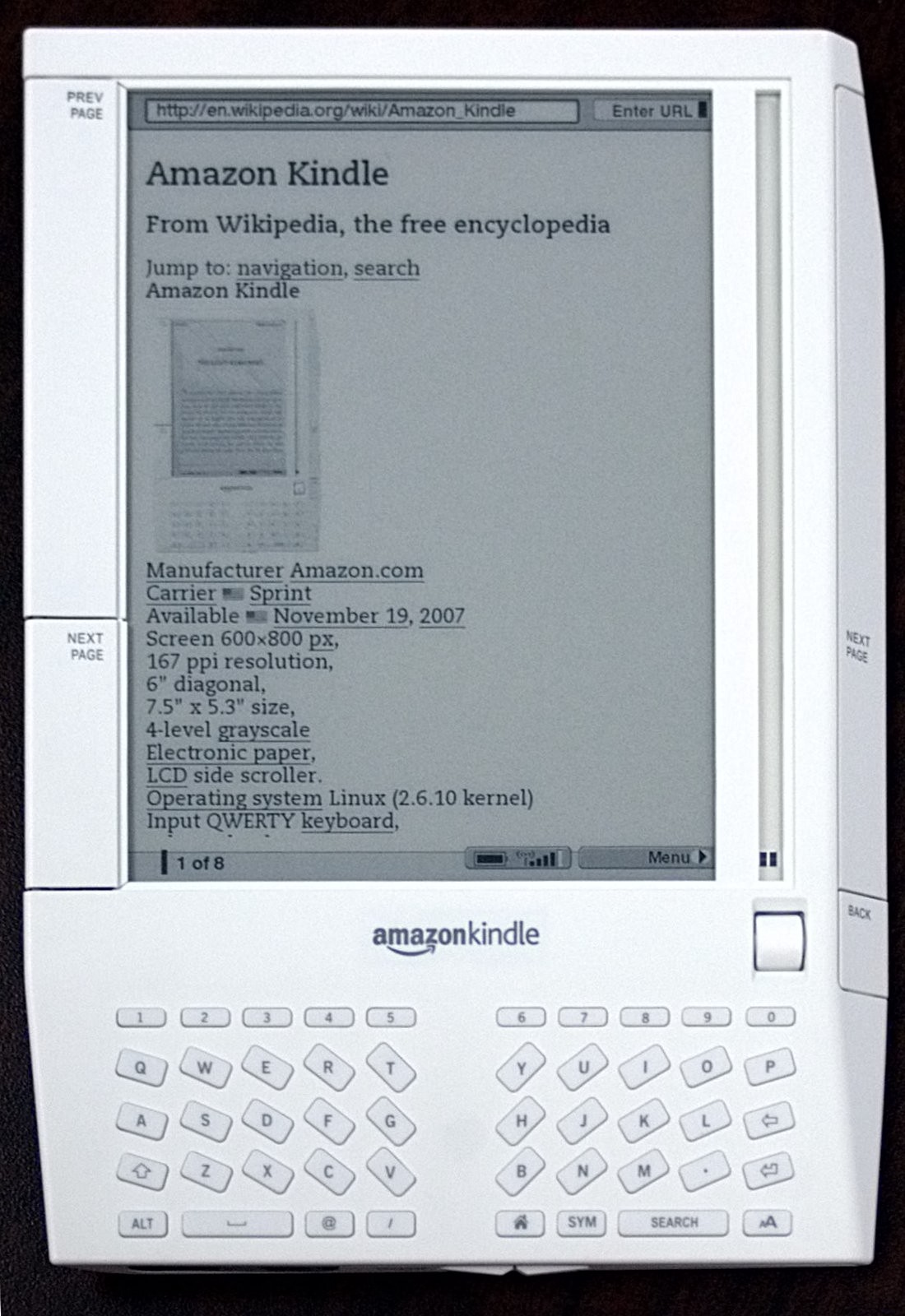According to the survey results in the UK, students generally had positive responses about their etextbook experiences. The authors go on to state the differences and key factors that influenced the student's engagement included: training, integration into the curriculum and functionality.
"Sixty-one percent of surveyed students said they used eTextbooks during their university studies. The majority of students borrowed one from the library (65 percent) or received one through their institution (55 percent), while 35 percent purchased a copy for themselves."
"All participants own at least one portable digital device, most commonly a smartphone, followed by a laptop. More significantly, 89 percent take their devices to lectures. "
 |
| The first Kindle, released in November 2007. |
What I'm taking from this are a few things. First, there is the integration of the tools that students are using already and prefer, such as their phone or other portable devices. These are the tools that students are used to and use continually in their daily life. Recently watching my nephew, who just graduated from college, I noted that he spent over three hours each day communicating on his phone with his friends. So today, this kind of tool, the smart phone, has become a common reading tool used by college students. As they have gotten more used to reading from such a screen, it will no longer seem like a stretch to read their assigned reading from it either. Next is the mere-exposure effect. Along with how much they already do, they have now been exposed to "text" reading from devices for a good amount of time. The first Kindle Reader was released over nine years ago, so reading devices for freshman college students have been around as common items since they were in the third grade. So following the exposure effect, each repeated exposure to the "novel" stimulus will cause less fear, and after repeated exposure, the individual will begin to react fondly to the once novel stimulus. So, after so many years of digital reading, students kind of like it.
eCampus News
A recent survey gauges student satisfaction with the digital programs, focusing specifically on eTextbook programs, offered by universities
Comments
Post a Comment